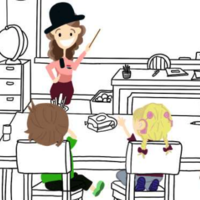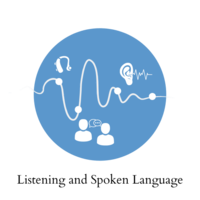
Listening and Spoken Language
If a baby only wears their HAT for four hours each day, it would take them six years to accumulate as much listening experience as a child who has hearing within normal limits (House Ear Clinic, 2001).
As many as 86% of students who are deaf/hard of hearing (DHH) are placed in the regular education environment all or part of the day (Rochester Institute of Technology as cited by Marschark, n.d.). Studies suggest that the majority of students who are DHH use listening and spoken language to communicate. This aligns with the statistic that the majority of children who are DHH are born to hearing parents. Students who are DHH and use hearing assistive technology (HAT) must receive direct, explicit, and specific instruction regarding their use of HAT.
When referring to students who are DHH and use listening and spoken language (including those who are bilingual/bimodal e.g. use ASL and spoken English), research indicates one of the most crucial and foundational factors for brain development is HAT usage. A study by Phonak showed only 10% of children wear their hearing aids full-time and 40% use them less than 4 hours a day (Anderson, 2012). Think of it this way, if a baby only wears their HAT for four hours each day, it would take them six years to accumulate as much listening experience as a child who has hearing within normal limits (House Ear Clinic, 2001).
Speech and Auditory Training Standards
- PK-5th Grade (#7763020)
- 6th-8th Grade (#7863020)
- 9th-12th Grade (#7963180)







